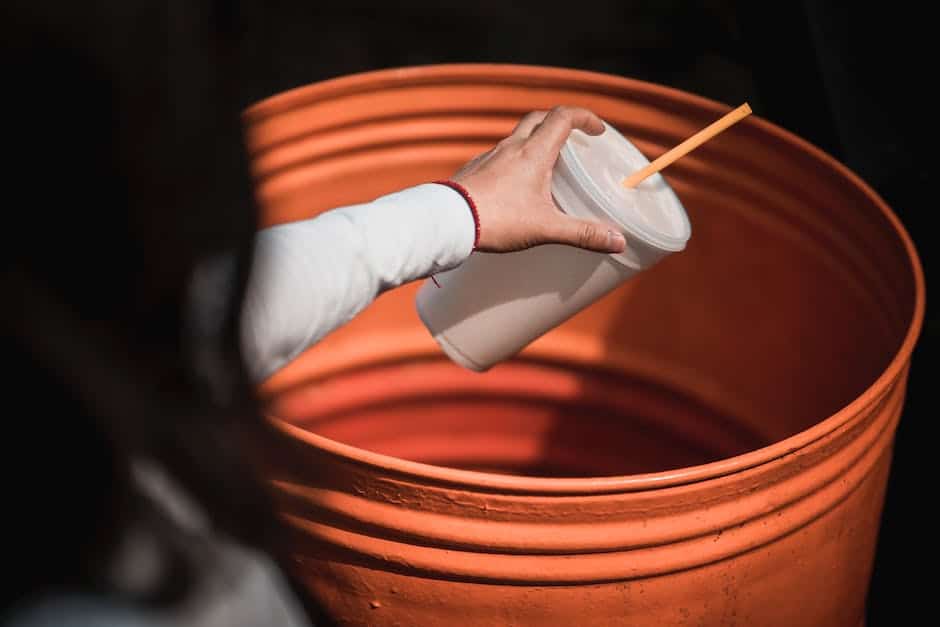How to Make a Leaf Compost Bin?
Composting is a fantastic way to recycle organic waste and create nutrient-rich soil for your garden. If you have an abundance of leaves, creating a leaf compost bin can be an excellent solution. In this article, we will explore the steps and materials needed to make a leaf compost bin, as well as the benefits it offers.
Step 1: Choosing the Right Location
The first step in creating a leaf compost bin is to choose the right location for it. Ideally, you want to place the bin in a spot that is easily accessible but also out of direct sunlight. This will help maintain the right moisture levels and prevent the compost from drying out too quickly.
Step 2: Gathering the Materials
Now that you have chosen the location, it’s time to gather the materials needed for your leaf compost bin. According to Tenth Acre Farm, the best materials for a leaf compost bin are small sticks, twigs, dried stalks, leaves, chemical-free straw, or dried grass. These materials provide the right balance of carbon and nitrogen, which are essential for successful composting.
Step 3: Building the Bin
Next, you will need to build the bin itself. There are various designs you can choose from, depending on your preferences and available space. The Spruce does not provide specific information on the best materials for a leaf compost bin, but you can use sturdy wire mesh, pallets, or wooden boards to construct a simple and effective bin.
Step 4: Layering the Materials
Once your bin is ready, it’s time to start layering the materials. Start with a layer of small sticks or twigs at the bottom to provide good airflow. Next, add a layer of dried stalks, leaves, and other organic matter. Make sure to alternate between dry materials like leaves and grass and wet materials like kitchen scraps to maintain the right moisture levels.
Step 5: Maintaining the Compost
Now that your leaf compost bin is set up, it’s important to maintain it properly for optimal composting. Here are a few tips:
- Turn the compost regularly to ensure proper aeration and decomposition.
- Keep the compost moist, but not soggy. If it feels too dry, add water, and if it’s too wet, add more dry materials.
- Avoid adding meat, dairy products, or oily items to prevent attracting pests.
- Monitor the temperature of the compost pile. Ideally, it should reach temperatures between 120°F to 160°F (49°C to 71°C) for efficient decomposition.
The Benefits of Using a Leaf Compost Bin
Using a leaf compost bin offers numerous benefits for both your garden and the environment. Here are some of the advantages:
- Enriching the soil with essential plant nutrients.
- Suppressing weeds by creating a natural barrier on the soil’s surface.
- Killing harmful pathogens and weed seeds, reducing the risk of plant diseases and pest infestations.
- Recycling carbon and nutrients in the soil, fostering a healthier ecosystem underground.
- Retaining soil moisture, especially during dry spells.
- Saving money on buying compost and keeping organic waste out of landfills, which reduces greenhouse gases, as mentioned on Gardener’s Path.
- Providing a free source of carbon material for the compost pile, which helps balance out nitrogen-heavy kitchen waste.
- Repelling weeds, retaining water, improving soil porosity, pH, and enhancing plant and root growth, as mentioned on Happy Sprout.
- Preventing erosion, adding nutrients to the soil, and providing an organic, chemical-free nutrient source.
Related Websites:
FAQs:
Q: What are the benefits of composting?
Composting is beneficial for the environment as it reduces waste and greenhouse gas emissions. It also improves soil health, promotes plant growth, and reduces the need for chemical fertilizers.
Q: Why should I compost leaves specifically?
Composting leaves helps to divert organic waste from landfills while creating nutrient-rich compost. It enriches the soil, improves moisture retention, and supports healthy plant growth.
Q: How do I select the right location for my compost bin?
When choosing a spot for your compost bin, consider factors like sunlight, drainage, and convenience. Look for a location that receives partial sunlight, has good drainage, and is easily accessible for adding materials and turning the compost.
Q: How do I collect and prepare leaves for composting?
Collect a diverse mix of leaves for composting, ideally from different tree species. Gather leaves during the fall when they are abundant. Shred or mulch the leaves to speed up the decomposition process and create smaller pieces that mix well with other materials.
Q: What are the different options for building a leaf compost bin?
There are various options for building a compost bin, such as using wire mesh, wooden pallets, or containers. Each option has its advantages, and you can choose one based on your available space and resources.






